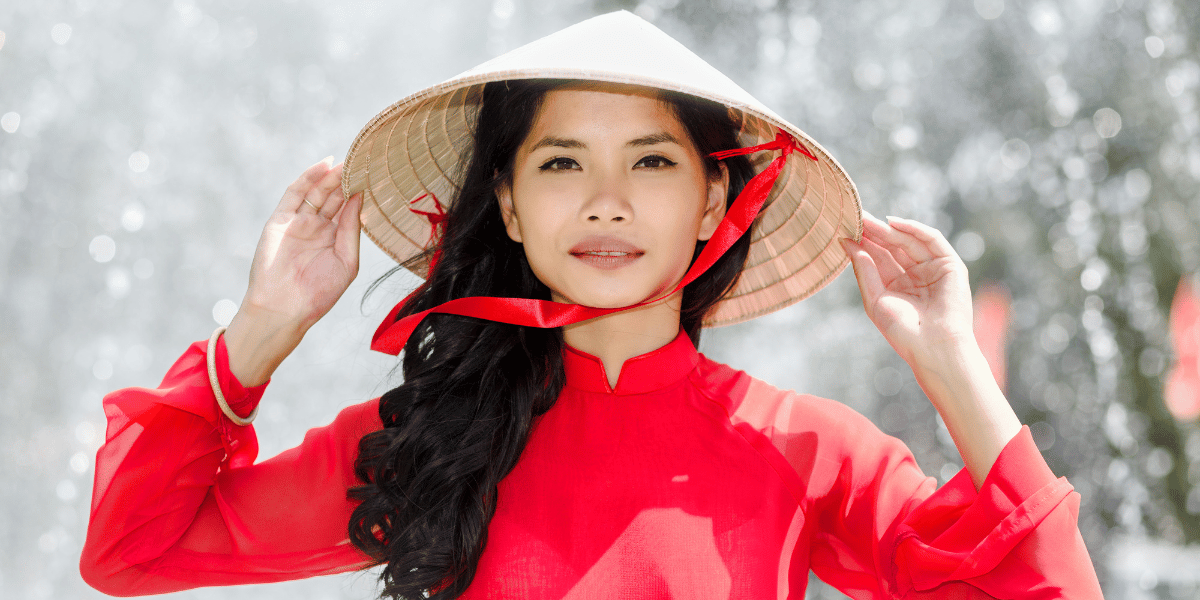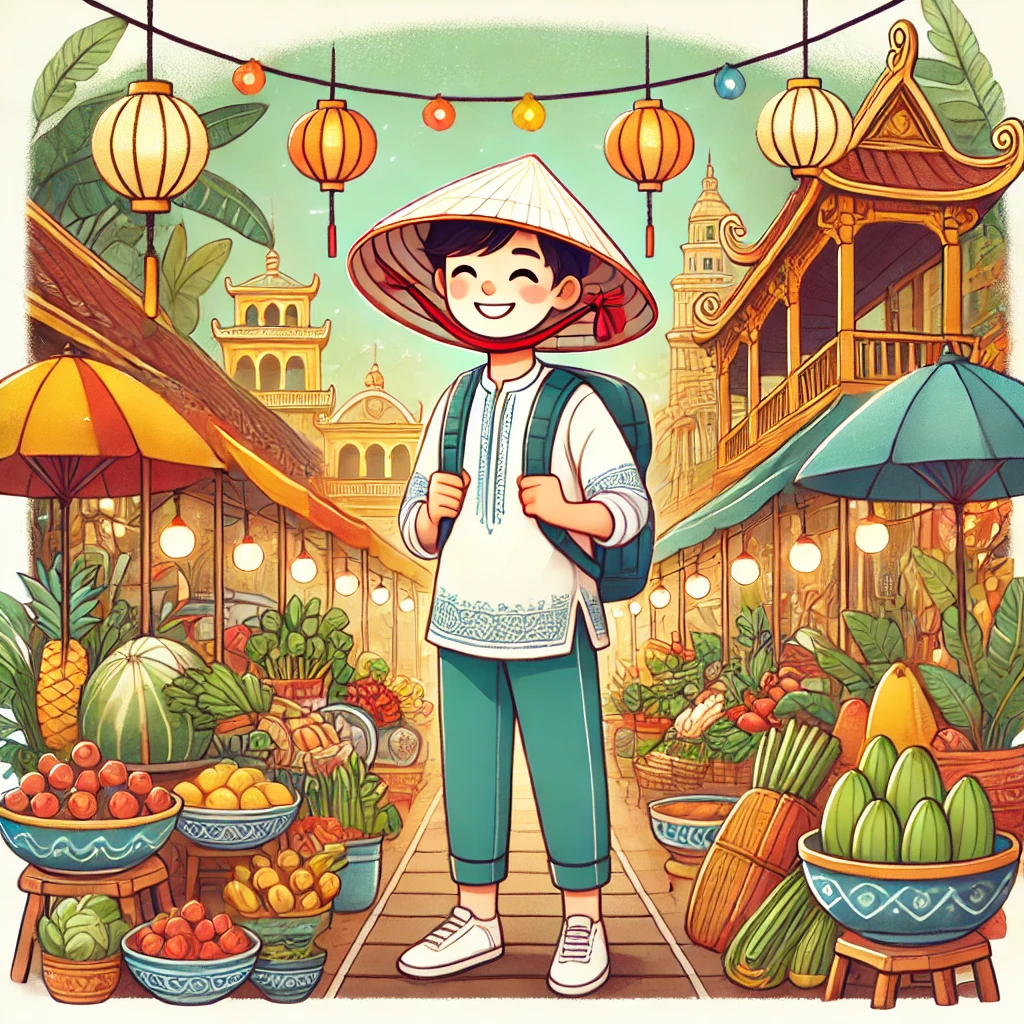Top Cultural Traditions in Vietnam
Last Updated on 11 August, 2024 by admin
Vietnam’s rich cultural heritage is a vibrant tapestry woven from centuries of history, a diversity of ethnic groups, and a blend of influences from neighboring countries like China, Cambodia, and Laos. This cultural richness is not only a testament to Vietnam’s long and storied past but also a reflection of its ability to harmoniously integrate different traditions and customs into a unique national identity. Throughout its history, Vietnam has been shaped by dynasties, colonization, wars, and migrations, each leaving an indelible mark on its cultural landscape.
Cultural traditions hold a central place in Vietnamese society, playing a crucial role in preserving the nation’s identity and fostering a sense of community and continuity among its people. From the bustling markets and ancient temples to the vibrant festivals and family rituals, these traditions are integral to daily life, guiding social interactions, religious practices, and even the arts. They serve as a bridge between the past and present, ensuring that the values, stories, and customs of generations continue to thrive in modern Vietnam.

The diversity of Vietnam’s cultural traditions is particularly striking when one considers the different regions and ethnic groups that make up the country. The North, Central, and South regions each boast distinct customs, dialects, and cuisines, while the country’s 54 recognized ethnic groups, including the Kinh, Tay, Hmong, and Khmer, contribute to a rich mosaic of cultural practices. This diversity is celebrated through various traditional festivals, ceremonies, and art forms, which vary from region to region, offering a vivid insight into the lives and beliefs of Vietnam’s people. These traditions not only enrich the nation’s cultural heritage but also highlight the deep respect for history, community, and family that is at the heart of Vietnamese identity.
Key Cultural Traditions
Ancestor Worship
Ancestor worship holds a central place in Vietnamese culture, deeply rooted in the values of filial piety and respect for elders. This practice reflects the belief that the spirits of deceased relatives continue to influence the living, and therefore, they should be honoured and remembered. In many Vietnamese homes, you will find an ancestral altar, often placed in a prominent location, where family members regularly offer prayers, incense, and food to their ancestors. These altars serve as a bridge between the living and the deceased, ensuring that family ties remain strong across generations. The practice reaches its peak during Tet, the Lunar New Year, when families come together to clean the graves of their ancestors, offer special foods, and perform rituals to invite the spirits of the deceased to join in the celebrations. This time-honoured tradition underscores the importance of family in Vietnamese society, where respect for one’s roots and the continuity of the family line are paramount.

Traditional Festivals
Festivals in Vietnam are a vibrant expression of the country’s rich cultural heritage, celebrating everything from historical events and legendary figures to religious beliefs and seasonal changes. Among the most significant is Tet, the Lunar New Year, which marks the beginning of spring and is the most important festival in Vietnamese culture. During Tet, streets are adorned with flowers and lanterns, homes are meticulously cleaned, and families prepare lavish meals to welcome the new year. Another major festival is the Mid-Autumn Festival, celebrated with lantern processions, mooncakes, and lion dances, particularly delighting children. The Hung Kings’ Temple Festival honours the ancient founders of Vietnam, with colourful processions, traditional music, and offerings at the Hung Kings’ temples. Each of these festivals is characterized by lively processions, traditional music and dance performances, and a range of unique customs that bring communities together in joyful celebration. These festivals not only provide a glimpse into Vietnam’s past but also foster a strong sense of national pride and cultural continuity.
Traditional Arts and Crafts
Vietnam’s traditional arts and crafts are a testament to the country’s long-standing artistic heritage and the skill of its artisans. Among the most notable is water puppetry, a unique art form that originated in the rice paddies of the Red River Delta, where puppets are controlled on the water’s surface, telling stories of folklore and rural life. Silk weaving is another revered craft, with villages like Van Phuc known for producing some of the finest silk in the country. Lacquerware, characterized by its glossy finish and intricate designs, and ceramics, especially from the Bat Trang village, are also highly valued. These crafts require immense skill, patience, and dedication, with techniques often passed down through generations. Visiting craft villages and workshops allows travelers to witness the meticulous creation process and purchase authentic souvenirs, directly supporting the artisans who keep these traditions alive.
Traditional Music and Dance
Vietnam’s traditional music and dance are deeply intertwined with its cultural identity, often reflecting stories, legends, and the daily lives of the people. Quan Ho singing, originating from the Bac Ninh province, is a form of folk music performed as a dialogue between male and female singers, expressing themes of love and longing. Ca Tru singing, recognized by UNESCO as an Intangible Cultural Heritage, combines poetry, music, and dance in a performance that was historically reserved for the elite. Hat Cheo, a traditional opera, blends singing, dancing, and acting to portray Vietnamese folklore and rural life. Each of these art forms is not only a cultural treasure but also a living tradition that continues to evolve while preserving its historical roots. Attending cultural performances of these traditional music and dance forms offers a captivating glimpse into the soul of Vietnam, showcasing the beauty, grace, and depth of its artistic heritage.

Traditional Clothing
The Ao Dai is perhaps the most iconic symbol of Vietnamese culture, epitomizing elegance, femininity, and national pride. This long, flowing garment, typically worn by women, consists of a fitted tunic worn over wide trousers, accentuating the wearer’s figure while maintaining a sense of modesty. The Ao Dai is often worn during formal events, festivals, and special occasions, and has become a cultural symbol recognized worldwide. In addition to the Ao Dai, Vietnam is home to a diverse range of traditional costumes worn by different ethnic groups, each reflecting the unique cultural identity of its people. For example, the Hmong people are known for their intricately embroidered clothing, often adorned with vibrant patterns and silver jewelry, while the Cham people wear distinctive sarongs and headscarves. These traditional costumes are not only beautiful but also serve as a celebration of Vietnam’s rich cultural diversity, with each garment telling a story of the wearer’s heritage and community.
In summary, Vietnam’s key cultural traditions, from ancestor worship and traditional festivals to its arts, crafts, music, dance, and clothing, offer a profound insight into the country’s rich and diverse heritage. These traditions are not just remnants of the past but are living practices that continue to shape and define Vietnamese identity today. Exploring these cultural elements provides a deeper understanding of Vietnam’s soul, revealing a nation that cherishes its history, values its community, and expresses its identity through a vibrant and enduring cultural tapestry.
Experiencing Vietnamese Culture
Visiting Temples and Pagodas
Exploring Vietnam’s temples and pagodas is an essential way to experience the country’s deep spiritual heritage and admire its architectural beauty. These sacred spaces, often set in serene surroundings, offer a glimpse into the religious practices that have shaped Vietnamese culture for centuries. Temples and pagodas are not just places of worship but also cultural landmarks that reflect the artistry, history, and traditions of their communities. For instance, the ancient One Pillar Pagoda in Hanoi, with its unique design symbolizing a lotus blossom rising from the water, and the majestic Thien Mu Pagoda in Hue, perched on a hill overlooking the Perfume River, are must-visit sites. As you wander through these peaceful sanctuaries, you’ll observe locals performing rituals, offering incense, and praying for health, prosperity, and peace. These visits allow you to connect with the spiritual essence of Vietnam and appreciate the harmonious blend of Buddhism, Taoism, and Confucianism that permeates Vietnamese life.
Participating in Festivals
Joining in the celebrations during Vietnam’s traditional festivals is a vibrant way to immerse yourself in the country’s cultural richness. Festivals in Vietnam are not just public holidays; they are lively events that bring communities together to celebrate their heritage, beliefs, and history. Participating in these festivals allows you to witness and even partake in traditional customs, performances, and rituals. Tet, the Lunar New Year, is the most important festival, where the streets come alive with flower markets, parades, and family gatherings. Another highlight is the Mid-Autumn Festival, a time for mooncakes, lanterns, and lion dances, particularly enjoyed by children. By engaging in these festivals, you’ll experience the joy, colour, and communal spirit that define Vietnamese celebrations, gaining a deeper understanding of the country’s cultural fabric.
Learning Traditional Arts and Crafts
For those interested in gaining a hands-on appreciation of Vietnamese culture, participating in workshops or classes to learn traditional arts and crafts is highly recommended. Vietnam is known for its rich tradition of craftsmanship, where skills such as silk weaving, lacquer painting, and ceramics have been passed down through generations. Taking a class in a craft village like Bat Trang for pottery or Van Phuc for silk weaving allows you to work alongside skilled artisans and learn the techniques that make these crafts so special. Not only does this provide a unique and educational experience, but it also gives you the chance to create your own souvenirs, making your journey even more memorable. These workshops offer a deeper connection to Vietnam’s cultural heritage and a new appreciation for the artistry involved in these traditional crafts.
Trying Local Cuisine
No cultural experience in Vietnam would be complete without diving into the country’s rich and diverse culinary landscape. Vietnamese cuisine is a vibrant reflection of the country’s geography, history, and cultural diversity, with each region offering its own specialties. Whether it’s the fragrant pho from the north, the spicy bun bo Hue from the central region, or the sweet and savoury banh xeo from the south, the food in Vietnam is a feast for the senses. Street food, in particular, is an integral part of Vietnamese culture, offering delicious and affordable meals that showcase the freshest ingredients and local flavours. Exploring street food stalls and local markets is not just about eating; it’s about experiencing the daily life of the Vietnamese people. Dishes are often prepared in front of you, allowing you to see the skill and care that goes into every meal. By tasting these regional dishes, you’ll gain insight into the culinary traditions that have been perfected over centuries and understand why food is such an important aspect of Vietnamese culture.
In conclusion, experiencing Vietnamese culture through visits to temples and pagodas, participation in festivals, learning traditional arts and crafts, and trying local cuisine provides a comprehensive and immersive journey into the heart of Vietnam. Each of these activities offers a different perspective on the country’s rich heritage, allowing you to connect more deeply with its people, traditions, and way of life. Whether you’re exploring ancient temples, celebrating with locals during a festival, creating your own craft, or enjoying a bowl of pho at a street stall, these experiences will leave you with a lasting appreciation for the beauty and complexity of Vietnamese culture.
Respecting Cultural Etiquette
Dress Code
When travelling in Vietnam, it’s important to be mindful of the dress code, particularly when visiting temples, pagodas, and other religious sites. Modesty is highly valued in Vietnamese culture, and dressing appropriately is a sign of respect. Visitors should aim to wear clothing that covers their shoulders and knees. In more conservative settings, such as rural areas or during religious ceremonies, it’s advisable to wear long pants or skirts and tops with sleeves. Bringing a light scarf or shawl is also useful, as it can be draped over the shoulders when needed. This attention to dress not only shows respect for the local customs but also helps you blend in and feel more comfortable in the community.
Behavior
Respectful behavior is another cornerstone of cultural etiquette in Vietnam. One key practice is the removal of shoes before entering homes and temples, a gesture that shows respect for the sacred or personal space. Visitors should always follow this custom when invited into someone’s home or when visiting religious sites. It’s also important to be aware of public displays of affection, which are generally considered inappropriate in Vietnam. While holding hands is usually acceptable, more intimate gestures, such as kissing or hugging in public, should be avoided. Additionally, when interacting with others, especially elders, it’s customary to greet them with a slight bow or a polite nod. Speaking softly and maintaining a calm demeanor is also appreciated, as loud or aggressive behavior is generally frowned upon.
Communication
Learning a few basic Vietnamese phrases can greatly enhance your travel experience and show respect for the local culture. Simple greetings like “Xin chào” (Hello) or “Cảm ơn” (Thank you) are always appreciated and can help build rapport with locals. Even if your pronunciation isn’t perfect, the effort to communicate in the local language is seen as a sign of goodwill and respect. Additionally, understanding a few key phrases like “Xin lỗi” (Excuse me/Sorry) and “Làm ơn” (Please) can facilitate smoother interactions and show that you are considerate of the people around you. In more rural areas, where English may not be widely spoken, these phrases can be particularly useful in making connections and navigating daily interactions. Beyond just the words, using polite gestures and maintaining a friendly tone can go a long way in creating positive and respectful exchanges.
In summary, respecting cultural etiquette in Vietnam involves dressing modestly, behaving respectfully, and making an effort to communicate in the local language. By adhering to these practices, you demonstrate your appreciation for the culture and your willingness to engage with the community in a thoughtful and considerate manner. These small acts of respect not only enrich your travel experience but also help build meaningful connections with the people you meet along the way.
Conclusion
Vietnam’s cultural traditions are a rich tapestry woven from centuries of history, diverse ethnic influences, and deep-rooted spiritual beliefs. From the vibrant festivals that light up the streets to the serene rituals of ancestor worship practiced in homes across the country, these traditions offer a profound insight into the soul of Vietnam. As a traveller, embracing and respecting these cultural practices not only enhances your experience but also demonstrates your appreciation for the heritage that defines this beautiful nation. By engaging thoughtfully with local customs, from dressing modestly at temples to learning basic Vietnamese phrases, you contribute to the preservation of these traditions. It is crucial to recognize that cultural heritage is a living entity, passed down through generations, and your respectful participation helps ensure that these rich traditions continue to thrive. As you explore Vietnam, remember that you are not just a visitor but also a steward of the cultural legacy that has been carefully nurtured over centuries. Your actions today play a role in preserving this heritage for future generations to discover and cherish.




